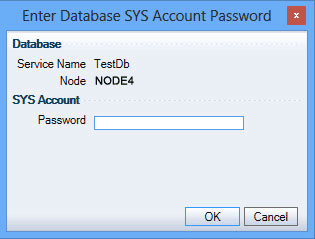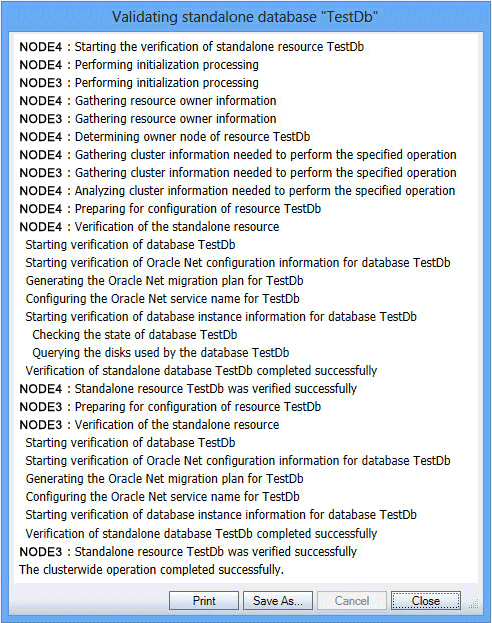4 Validating a Standalone Single-Instance Database
The Validate Standalone Database operation performs validation checks to ensure that the standalone database is configured correctly on the node where it resides and to remove any references to the database that may exist on other cluster nodes before adding it to a group. (References to the database may exist on other cluster nodes if the database was once added to a group and then later removed.) This ensures that the database can be made highly available using Oracle Fail Safe.
Because Oracle Fail Safe created it, you may not validate the database that you created in Chapter 3. However, for the purpose of demonstration, you do so in this lesson.
4.1 Using the Validate Standalone Database Command
Select the TestDb database to validate, then select Validate from the Actions menu of the Oracle Resources view. You can also right-click the resource in the Available Oracle Resources list to view actions at Available Resource level and select Validate.
4.2 Using the Validate Standalone Database Dialog Box
Depending on whether or not operating system authentication is enabled, Oracle Fail Safe may open the Enter Database SYS Account Password window to confirm that you have SYS account privileges to validate the sample database. If this window opens, enter the password for the SYS account.

Description of the illustration vsindialog.gif

